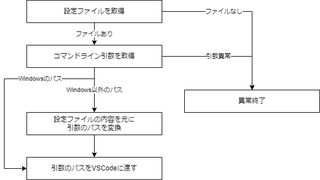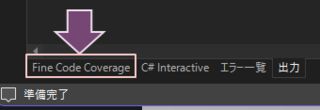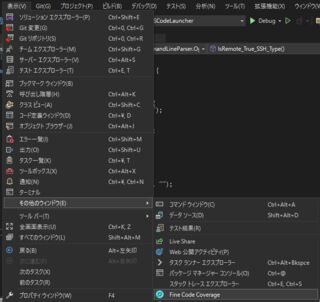TypeScript + SWCと組み合わせてJestを回してるとテストケースの増加に伴いメモリリークが発生する現象が起きます。メモリに余裕があれば問題にはならないですが、開発機のメモリが足りないとかCIで使ってるECSのメモリが足りないとか、引っかかるケースもあると思います。
今回はこの問題に対する対処法を書いていきます。完全には改善されませんが、かなりマシになります。参考までに今回の検証では283MB使ってたのが67MBまで減りました。
この現象はNode.js 16.11.0以降で発生するらしいので、それ以前の環境では起きないかもしれません。
確認環境
Node.js v20.0.0
| module | version |
|---|---|
| @swc/cli | 0.1.62 |
| @swc/core | 1.3.59 |
| @swc/jest | 0.2.26 |
| @types/jest | 29.5.1 |
| @types/node | 20.2.3 |
| jest | 29.5.0 |
| jest-watch-typeahead | 2.2.2 |
| typescript | 5.0.4 |
確認用のテストコード
以下のテストコードを書いたファイルを100ファイル作り、それを流して確認しています。
describe('example1', () => {
it('1', () => {
expect(1).toBe(1);
});
it('2', () => {
expect(2).toBe(2);
});
it('3', () => {
expect(3).toBe(3);
});
it('4', () => {
expect(4).toBe(4);
});
it('5', () => {
expect(5).toBe(5);
});
});
describe('example2', () => {
it('1', () => {
expect(1).toBe(1);
});
it('2', () => {
expect(2).toBe(2);
});
it('3', () => {
expect(3).toBe(3);
});
it('4', () => {
expect(4).toBe(4);
});
it('5', () => {
expect(5).toBe(5);
});
});
確認環境一式
以下のリポジトリに確認したソースコードを一式格納しています。
[blogcard https://github.com/Lycolia/jest-memory-leak-example]
メモリリークしていく様子
(41 MB heap size)
(42 MB heap size)
(52 MB heap size)
(51 MB heap size)
(37 MB heap size)
(47 MB heap size)
(47 MB heap size)
(50 MB heap size)
(60 MB heap size)
(60 MB heap size)
(62 MB heap size)
(71 MB heap size)
(73 MB heap size)
(74 MB heap size)
(84 MB heap size)
(85 MB heap size)
(86 MB heap size)
(96 MB heap size)
(97 MB heap size)
(99 MB heap size)
(108 MB heap size)
(110 MB heap size)
(111 MB heap size)
(120 MB heap size)
(122 MB heap size)
(124 MB heap size)
(75 MB heap size)
(83 MB heap size)
(84 MB heap size)
(86 MB heap size)
(96 MB heap size)
(96 MB heap size)
(97 MB heap size)
(107 MB heap size)
(108 MB heap size)
(109 MB heap size)
(118 MB heap size)
(120 MB heap size)
(121 MB heap size)
(130 MB heap size)
(132 MB heap size)
(133 MB heap size)
(143 MB heap size)
(144 MB heap size)
(145 MB heap size)
(154 MB heap size)
(156 MB heap size)
(157 MB heap size)
(166 MB heap size)
(168 MB heap size)
(169 MB heap size)
(179 MB heap size)
(181 MB heap size)
(182 MB heap size)
(191 MB heap size)
(193 MB heap size)
(194 MB heap size)
(203 MB heap size)
(205 MB heap size)
(207 MB heap size)
(216 MB heap size)
(217 MB heap size)
(219 MB heap size)
(228 MB heap size)
(230 MB heap size)
(231 MB heap size)
(240 MB heap size)
(242 MB heap size)
(243 MB heap size)
(252 MB heap size)
(254 MB heap size)
(255 MB heap size)
(264 MB heap size)
(266 MB heap size)
(267 MB heap size)
(277 MB heap size)
(278 MB heap size)
(280 MB heap size)
(195 MB heap size)
(204 MB heap size)
(203 MB heap size)
(212 MB heap size)
(213 MB heap size)
(214 MB heap size)
(223 MB heap size)
(224 MB heap size)
(226 MB heap size)
(235 MB heap size)
(237 MB heap size)
(238 MB heap size)
(247 MB heap size)
(249 MB heap size)
(250 MB heap size)
(259 MB heap size)
(261 MB heap size)
(262 MB heap size)
(271 MB heap size)
(273 MB heap size)
(274 MB heap size)
(283 MB heap size)
Test Suites: 100 passed, 100 total
Tests: 1000 passed, 1000 total
Snapshots: 0 total
Time: 11.347 s, estimated 12 s
解消方法
npm i -D @side/jest-runtime などで@side/jest-runtimeを導入し、jest.config.jsに以下の行を追加することで改善します。
runtime: '@side/jest-runtime',
このコードで何か既存の実装やテストに影響が発生するかどうかは確認していませんが、後述する@side/jest-runtimeが生まれる切欠になったPRの様子を見る限り大丈夫なんじゃないかなとなんとなく思っています。
メモリリークが改善したあとの様子
(39 MB heap size)
(39 MB heap size)
(47 MB heap size)
(47 MB heap size)
(34 MB heap size)
(42 MB heap size)
(41 MB heap size)
(49 MB heap size)
(51 MB heap size)
(59 MB heap size)
(59 MB heap size)
(60 MB heap size)
(68 MB heap size)
(69 MB heap size)
(77 MB heap size)
(77 MB heap size)
(85 MB heap size)
(86 MB heap size)
(95 MB heap size)
(95 MB heap size)
(95 MB heap size)
(103 MB heap size)
(104 MB heap size)
(112 MB heap size)
(112 MB heap size)
(120 MB heap size)
(121 MB heap size)
(31 MB heap size)
(38 MB heap size)
(37 MB heap size)
(44 MB heap size)
(46 MB heap size)
(54 MB heap size)
(54 MB heap size)
(54 MB heap size)
(62 MB heap size)
(62 MB heap size)
(70 MB heap size)
(71 MB heap size)
(79 MB heap size)
(79 MB heap size)
(87 MB heap size)
(88 MB heap size)
(96 MB heap size)
(96 MB heap size)
(97 MB heap size)
(105 MB heap size)
(105 MB heap size)
(31 MB heap size)
(39 MB heap size)
(37 MB heap size)
(44 MB heap size)
(46 MB heap size)
(54 MB heap size)
(54 MB heap size)
(54 MB heap size)
(62 MB heap size)
(62 MB heap size)
(70 MB heap size)
(70 MB heap size)
(78 MB heap size)
(79 MB heap size)
(87 MB heap size)
(88 MB heap size)
(96 MB heap size)
(96 MB heap size)
(96 MB heap size)
(104 MB heap size)
(105 MB heap size)
(31 MB heap size)
(39 MB heap size)
(37 MB heap size)
(45 MB heap size)
(46 MB heap size)
(54 MB heap size)
(54 MB heap size)
(54 MB heap size)
(62 MB heap size)
(63 MB heap size)
(70 MB heap size)
(71 MB heap size)
(78 MB heap size)
(79 MB heap size)
(87 MB heap size)
(88 MB heap size)
(96 MB heap size)
(96 MB heap size)
(97 MB heap size)
(105 MB heap size)
(105 MB heap size)
(30 MB heap size)
(37 MB heap size)
(45 MB heap size)
(43 MB heap size)
(44 MB heap size)
(51 MB heap size)
(51 MB heap size)
(59 MB heap size)
(59 MB heap size)
(67 MB heap size)
Test Suites: 100 passed, 100 total
Tests: 1000 passed, 1000 total
Snapshots: 0 total
Time: 9.071 s, estimated 11 s
参考記事
メモリリークバグに関するIssue
https://github.com/jestjs/jest/issues/11956
@side/jest-runtimeが出来る元になったPR
https://github.com/jestjs/jest/pull/12205
Windows向けのツールを作ろうというので、昔よく使っていたC#.NETで開発をすることにしたのですが結構苦労があったのでその話を書いていこうと思います。Unit testingを書くのは一旦断念しましたが、暇があれば挑戦したいとは思ってます。
事のいきさつ
WindowsのVSCodeでRemote Development拡張を使うことが多いのですが、リモートエクスプローラーにアイテムが増えてくると移動したいフォルダを探すのが大変になってくるのと、ここに出てないフォルダを開くのが結構手間という問題があり、これを解決できないかということを考えていました。
そこで考えついたのがWSLやSSHのネットワークパス上でExplorerの右クリックメニューを開いたらVSCodeがリモートモードで起動できると良いのでは?という所でした。Windows向けでexeからバイナリ起動するならC#で書くのが楽だろうと考え、C#での開発に着手しました。
疎結合な実装でUnit testingもできたらいいなーと漠然と考えながら開発していたのですが、最後にC#を書いたのは3年ほど前で、C#でモダンな実装をした経験もなかったので結構苦労しました。よく考えたらTypeScriptかJavaScriptくらいでしかまともにやったことがないし、UT自体他言語でもGolangかPHPでしか書いたことがなかったので、C#でこれをやるのは自分の実装技術に対する一種の挑戦みたいなところがありました。結論としてはあっけなく破れたわけですが…。
ツールの要件
- Explorerの右クリックメニューから起動する
- 開いたパスに応じてWindowsローカル、SSH、WSLを判定し、適切なモードでVSCodeを起動する
- パス解決には設定ファイルを用いる
- Explorerから渡されるパスはリモート環境のパスと差異があるので、そこを解決するためのものです
ツールの設計
やることは設定ファイルを読み込み、コマンドライン引数から値を取得し、それらをいい感じに変換してVSCodeに渡すだけです
大まかなフロー
実行形式
- コマンドライン引数
this.exe <dir path>
-
設定ファイル形式
```json5
{
"CodePath": "VSCodeのexeパス",
// リモートホスト定義。辞書形式
"Remote": {
"リモートホスト名": {
"ExplorerPrefix": "explorerのパスから除外する文字列",
"AppendPrefix": "explorerのパスに追加する文字列"
},
}
}
```
ツールの実装
まずはTDD的にやろうとしてInterfaceを作成し、Classで実装し、ロジック自体は好調に組み上がっていき、テストもすべて通るようになりました。但し実際にexeを蹴ると動かず、テストは通るが動かないゴミが出来上がっていました。(途中で動作確認をしなかったのか?と思うかもしれませんが、実際は完全に動くものを作ってからテスト可能な形に書き換えるという流れで作っていたのでこうなっています)
動かなかった理由は設定ファイルにJSONを採用していて、デシリアライザにSystem.Text.Json.JsonSerializerを使っていたためです。このデシリアライザは標準ではInterfaceに対してJSONをデシリアライズできません(考えてみれば当然ですが)。しかし、テストをするためにはモックをDIしたいので、Interfaceが必要です。
以下は実際に設定を読み込むために実装したClassですが、メンバが全部Interfaceになっているので、標準の状態ではデシリアライズに失敗します。ならばデシリアライザを自作すればいいという話が出てくるのですが、高々設定ファイルを読み込む処理にそこまで情熱を込めるか…?と言うことになり、諦めました。
public class ConfigBase : IConfigBase {
private IFileInfo? _CodePath;
private IDictionary<string, IConfigRemote>? _Remote;
public IFileInfo CodePath {
get {
if (this._CodePath == null) {
throw new Exception("Config Error: Missing CodePath.");
} else if (this._CodePath == null) {
throw new Exception("Config Error: CodePath is empty. Set the code.exe path in this field.");
} else if (!this._CodePath.Exists) {
throw new Exception("Config Error: CodePath is Not exists.");
} else {
return this._CodePath;
}
}
set { this._CodePath = value; }
}
public IDictionary<string, IConfigRemote> Remote {
get {
if (this._Remote == null) {
throw new Exception("Config Error: Missing Remote.");
} else if (this._Remote.Count == 0) {
throw new Exception("Config Error: Remote is empty. Set the remote infomation in this field.");
} else {
return this._Remote;
}
}
set { this._Remote = value; }
}
}
そもそもこのツールは「設定ファイルを読み込み、コマンドライン引数から値を取得し、それらをいい感じに変換してVSCodeに渡すだけ」のツールです。たったそれだけのツールに入れる仕組みにしては大げさすぎると感じました。
テストをするためにInterfaceを作ったり、本実装とモック用のClassを作る程度まではまだ容認できるのですが、カスタムデシリアライザを作ると、今度はそれのテストも必要になってきます。どう考えてもしんどい。
因みにこのコード、仮にInterfaceをやめても文字列をFileInfoに組み替えるためのカスタムデシリアライザの実装が必要で結構頭が痛くなります…。多分そこはFile.existsをラップしたクラスをDIしてやるのが無難な気がしますね。
この辺はTypeScriptだとimportの中身をJestで書き換えたら終わりなのであんま考えなくていいのは楽ですが、C#だと厳しいなと感じました。
C#でテストを書いていて思ったこと
クラスベースで実装していくとメソッド単位でのテストがしづらく、テストがコケても原因が把握しづらいというのを一つ課題感として覚えました。TSでなんちゃって関数型開発をしていれば関数のUTを書けば関数の挙動を把握できますが、Classではそうも行きません。
仮に1つのpublic methodが5つのprivate methodを呼び出していて、private methodの裏ではprivate propertyが複雑な依存を持っていたとしたらどうでしょうか?
正直デバッグをかけないとどこで何がコケたか特定できないと思います。そんな実装にするのが悪いといえばそうですが、でもクラスってそういうものじゃないですっけ…?お互いに関連性がなくていいならもうそれ関数で良くないですか?って思いました。
勿論、全部静的メソッドにしてClassそのものは単なるエンティティにするのも選択肢の一つだとは思います。しかしC#でそこまでやるか…?という疑念が個人的にあるのと、処理を繋げたテストをUTとして書く方法がなくなると思います。例えばインスタンスメソッドならモックをDIすることでメソッドが呼ばれた事や、戻り値に対する分岐を確認できますが、静的メソッドでこれをやるのは難しいと思います。
Classの単体テストは関数と状態が密結合したテストになってしまうので、いまいち微妙だなと思ったのが今回思ったことでした。
runasでは上手く出来ないっぽいのでPowerShellを呼んで実行する。管理者実行したいコマンドを分けたい時に活用できる。
確認環境
| Env | Ver |
|---|---|
| Windows 11 Pro | 22621.1413 |
サンプルコード
powershell start-process <ここにコマンド> -verb runas
備考
PowerShellのリファレンスに沿って書くなら大文字小文字を書き分ける方がより正しいが、基本的に大文字と小文字を区別しないため、どっちでも動く。
powershell Start-Process <ここにコマンド> -Verb runAs
TypeScriptやJavaScriptだとコマンド一発で見れるコードカバレッジですが、C#.NETの開発ではちょっと手こずったので導入方法を記録しておく。
確認環境
| Env | Ver |
|---|---|
| Visual Studio 2022 Community | Version 17.5.1 |
| .NET Framework | 6.0 |
導入手順
- C#.NETで開発用のプロジェクトを作成
- 作成したプロジェクトのソリューションにxUnitテストプロジェクトを追加
- 何かしらの実装と、それに対するテスト実装を作成
- Fine Code CoverageをVisual Studioにインストール
- ソリューションエクスプローラからxUnitテストプロジェクトを右クリックしてテストの実行
- 下部トレイにあるFine Code Coverageタブを選択
- コードカバレッジが表示される
疑問
Visual Studio 2022にもなって標準でコードカバレッジも取れないの?
今どきそんな事あるか?思って調べてみたところ、どうやらEnterpriseであればコードカバレッジを取る機能がついている模様。
まぁ無料版だから仕方ないねということで諦めるしかないでしょう。Professional版にもないけど…w。VisualStudioの便利機能は以前から有料機能に組み込まれる傾向があるので仕方がない気もしますが、取り敢えず今回は有志が便利なツールを作っていてくれて助かりました。
因みにコードカバレッジ自体は無料版でも取れます。ただこれはXMLのカバレッジレポートを吐くだけなので、可視化するには別途ここからHTMLを生成する必要があり面倒なので、なんかもっと楽な方法はないかなと思って見つけたのが今回のFine Code Coverageでした。
しかしFine Code Coverage便利なのにそこまで利用されているように見えないのは、やはりテストに関心がある人が少ないのか、公式にあるカバレッジHTMLを吐く方法で納得しているのか、その辺りが気になりました。自前でFine Code Coverageの様な物を作っている人もいるでしょうが、それは少数派だと思いますし。
この方法で取れるカバレッジは正しいものか?
GitHubのREADMEを読む限り、組み込みのカバレッジレポーターのAPIを叩いて取ってきたものを表示しているだけに見えるので、恐らく正しいデータが出ているのではないかと思います。
少なくとも単純なコードのUnit testingを書いた感じではテストケースを増減することでカバレッジも連動して増減していたのと、組み込みのレポーターがそのくらいはやってくれている筈で、これはその内容を表示しているだけなので恐らく大丈夫なのではないかと考えています。
この記事ではGitHub ActionsのCustom actionをJavaScriptで実装するJavaScript actionをTypeScriptとSWCを使って実装した方法を書いてます。
モチベーション
- GitHub ActionsのWorkflowsを共通化したい
- TypeScriptでロジックを書きたい
- SWCを使いたい(nccはtscを使うので避けたい
- github-scriptは一定以上のボリュームがあるものには向かない
- これを使いつつUTを書いたりするとなると結構面倒になると思う
今回作るもの
Custom actionのうちJavaScript actionを作成します。
実装コードはTypeScript、トランスパイラはSWC、バンドラはwebpackを利用します。
バンドラを利用するのは、node_modules/をGitで管理したくないためです。
ビルド成果物であるdist/は実行時に必要なため、Gitで管理します。
(CI上でビルドしてキャッシュさせておくことも出来ると思いますが、今回は扱いません)
確認環境
| Env | Ver |
|---|---|
| @actions/core | 1.10.0 |
| @actions/github | 5.1.1 |
| @swc/cli | 0.1.57 |
| @swc/core | 1.3.26 |
| swc-loader | 0.2.3 |
| typescript | 4.9.5 |
| webpack | 5.75.0 |
| webpack-cli | 5.0.1 |
サンプルコード
Custom Actions本体
Custom action本体のサンプルコードです。以下に一式があります。
https://github.com/Lycolia/typescript-code-examples/tree/main/swc-ts-custom-actions
ディレクトリ構成
dist/配下を叩くため、ここはGit管理に含めます。バンドルするのでnode_modules/はGit管理から外して問題ありません。
├─dist/
│ └─index.js # Custom Actionsとして実行するファイル本体
├─node_modules/
├─src/
│ └─index.ts # TypeScript実装
├─action.yaml # Custom Actionsの定義
├─package-lock.json
├─package.json
├─swcrc-base.js # SWCの設定
├─tsconfig.json # tscの設定
└─webpack.config.js # webpackの設定
swcrc-base.js
SWCの設定例。特にJavaScript actionのための設定はなく、CLI向けのトランスパイルが出来る設定ならおk。
ファイル名は何でも大丈夫ですが、この場では.swcrcにしないことで、直接SWCで利用しないことを判りやすくするために違う名前にしています。
module.exports = {
module: {
type: 'commonjs',
},
jsc: {
target: 'es2020',
parser: {
syntax: 'typescript',
tsx: false,
decorators: false,
dynamicImport: false,
},
baseUrl: '.',
paths: {
'src/*': ['src/*'],
},
},
};
webpack.config.js
SWCを使って.tsファイルをバンドルするための設定。これがないとimportの解決ができずにコケます。
node_modules/配下をGit管理に含める場合は不要かもしれませんが、それをするのは微妙だと思います。
const path = require('path');
const swcrcBase = require(path.resolve(__dirname, 'swcrc-base'));
module.exports = {
// エントリポイント
entry: path.resolve(__dirname, 'src/index.ts'),
// 出力設定
output: {
// クリーンアップ後に出力
clean: true,
// 出力ファイル名
filename: 'index.js',
// 出力パス
path: path.resolve(__dirname, 'dist'),
},
// 設定必須なので何か指定しておく
mode: 'production',
// 指定してないとNode.jsのネイティブAPIが呼べない
target: ['node'],
module: {
// swc-loaderの設定
rules: [
{
test: /\.ts$/,
exclude: /(node_modules)/,
use: {
loader: 'swc-loader',
// swcrcの設定
options: {
...swcrcBase,
},
},
},
],
},
resolve: {
// import時のファイル拡張子を省略してる場合にパスを解決するための設定
extensions: ['', '.ts', '.js'],
},
};
src/index.ts
最低限これだけ確認できれば応用して実装できるだろうという程度のサンプルコード。
@actions/*系の使い方は以下のリンクから確認できます。
actions/toolkit: The GitHub ToolKit for developing GitHub Actions.
import * as core from '@actions/core';
import * as github from '@actions/github';
const githubToken = core.getInput('GITHUB_TOKEN', { required: true });
const octokit = github.getOctokit(githubToken);
console.log('octokit', octokit);
console.log('context', github.context);
core.setOutput('RESULT_MESSAGE', 'test result message');
action.yaml
実装の参考例として引数と出力を定義してます。特に不要な場合は書かなくてもいいです。
Node.jsのバージョンを詳細に指定したい場合は、composite action にすれば可能だとは思いますが、試してない。
composite actionにしてnvmか何かでインストールしてやれば恐らく可能。
構文は以下のページで確認できます。
GitHub Actions のメタデータ構文 - GitHub Docs
name: example
description: custom actions example
inputs:
GITHUB_TOKEN:
description: 'Repogitory GITHUB_TOKEN'
required: true
outputs:
RESULT_MESSAGE:
description: 'Result message'
on:
workflow_call:
runs:
using: node16
main: dist/index.js
Custom actionを使う側
Custom actionを使うWorkflowのサンプルコードです。以下にソースがあります。
https://github.com/Lycolia/custom-actions-usage-example
.github/workflows/example.yaml
usesのところにはリポジトリの組織名と、リポジトリ名、action.yamlが配置されているディレクトリまでのパスを書きます。ルートディレクトリにある場合はパスを書かなくてOK
最後に@sha-hashでコミットハッシュかタグを付けてやれば呼べるようになります。
動作確認中はハッシュが頻繁に変わるので、最新のハッシュを取得してきて設定されるようにしておくと便利かもしれません。
name: run example
on:
workflow_dispatch:
jobs:
example:
runs-on: ubuntu-latest
steps:
- name: run custom actions
id: test
uses: org-name/repo-name/path/to/file@sha-hash
with:
# Custom action側で定義されている引数(input)の設定
GITHUB_TOKEN: ${{ secrets.GITHUB_TOKEN }}
- name: show custom actions output
# Custom action側で定義されている出力(output)の取得
run: echo ${{ steps.test.outputs.RESULT_MESSAGE }}
参考資料
- Getting Started – SWC
- swcrcの書き方やswc-loaderの使い方
- Concepts | webpack
- webpackの設定
- カスタム アクションについて - GitHub Docs
- GitHub Actions のメタデータ構文 - GitHub Docs
- プライベート リポジトリからのアクションとワークフローの共有 - GitHub Docs
- actions/toolkit: The GitHub ToolKit for developing GitHub Actions.
@actions/*系のドキュメントなど





